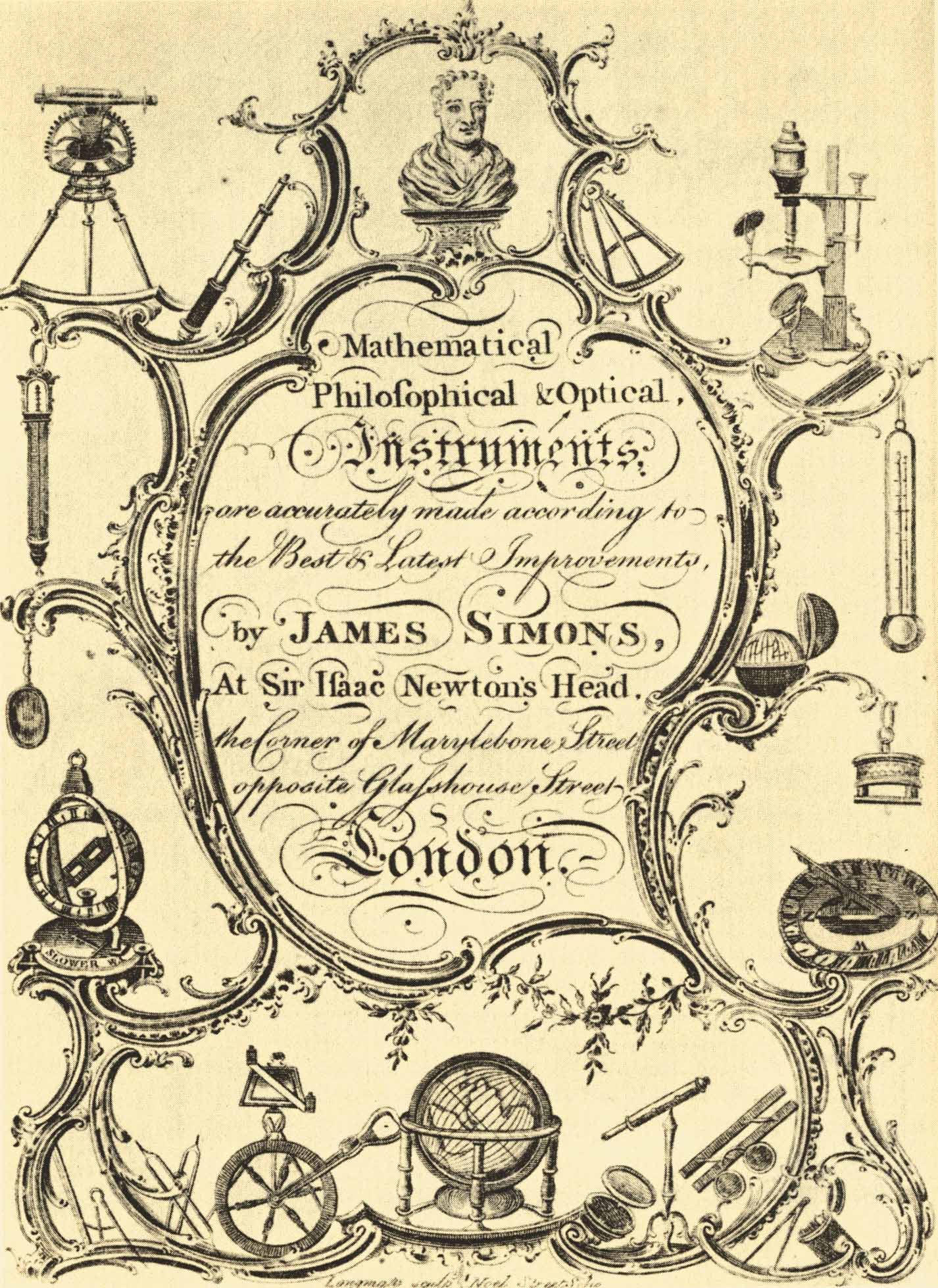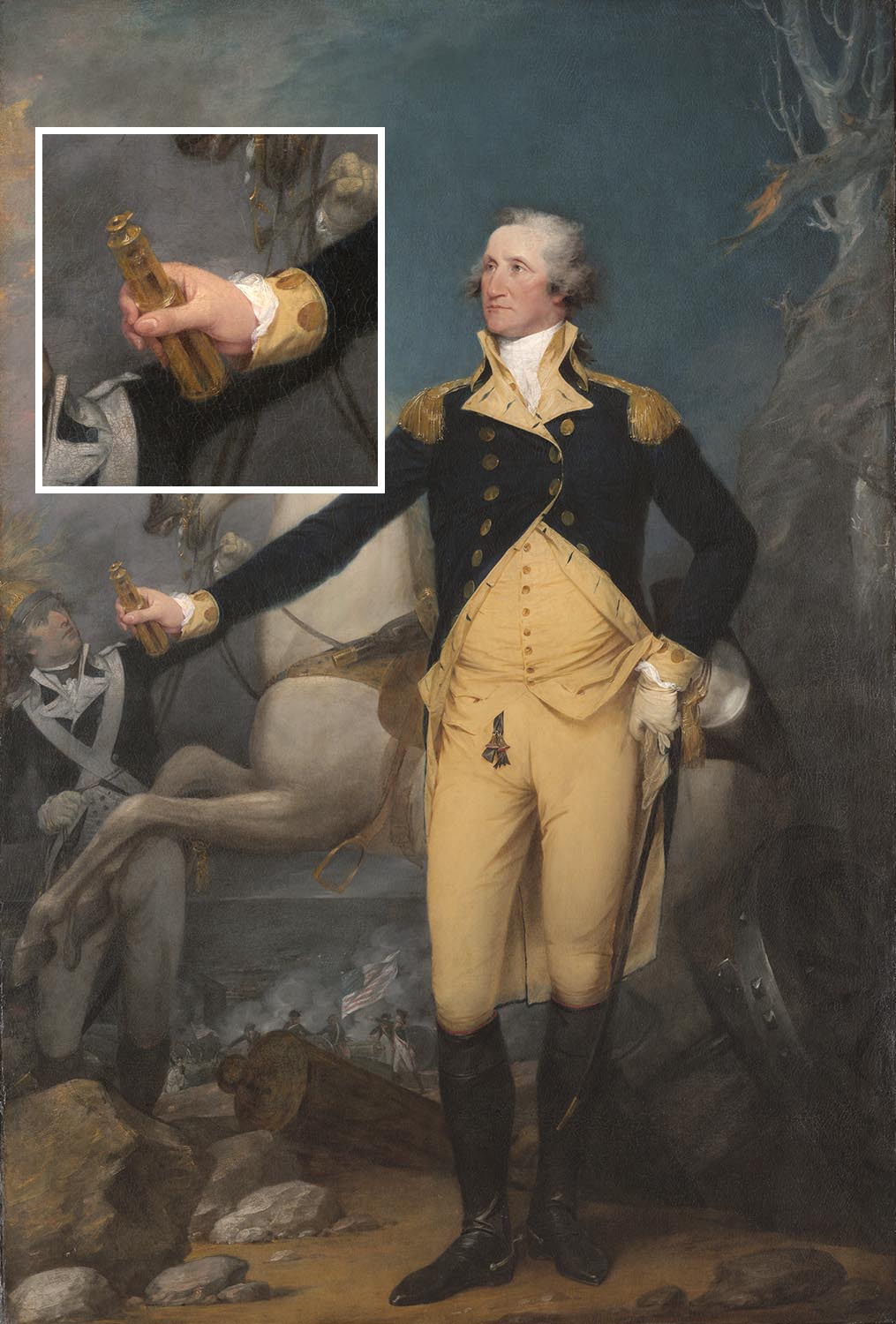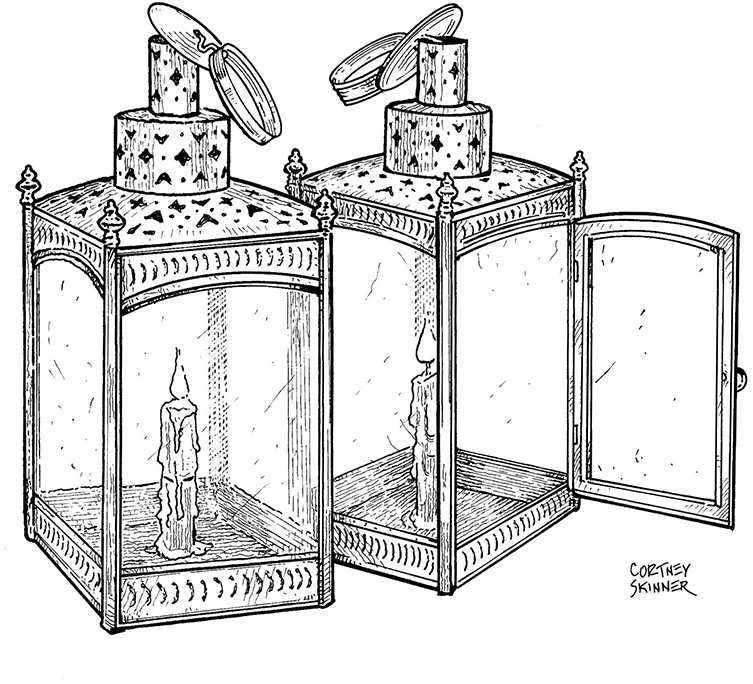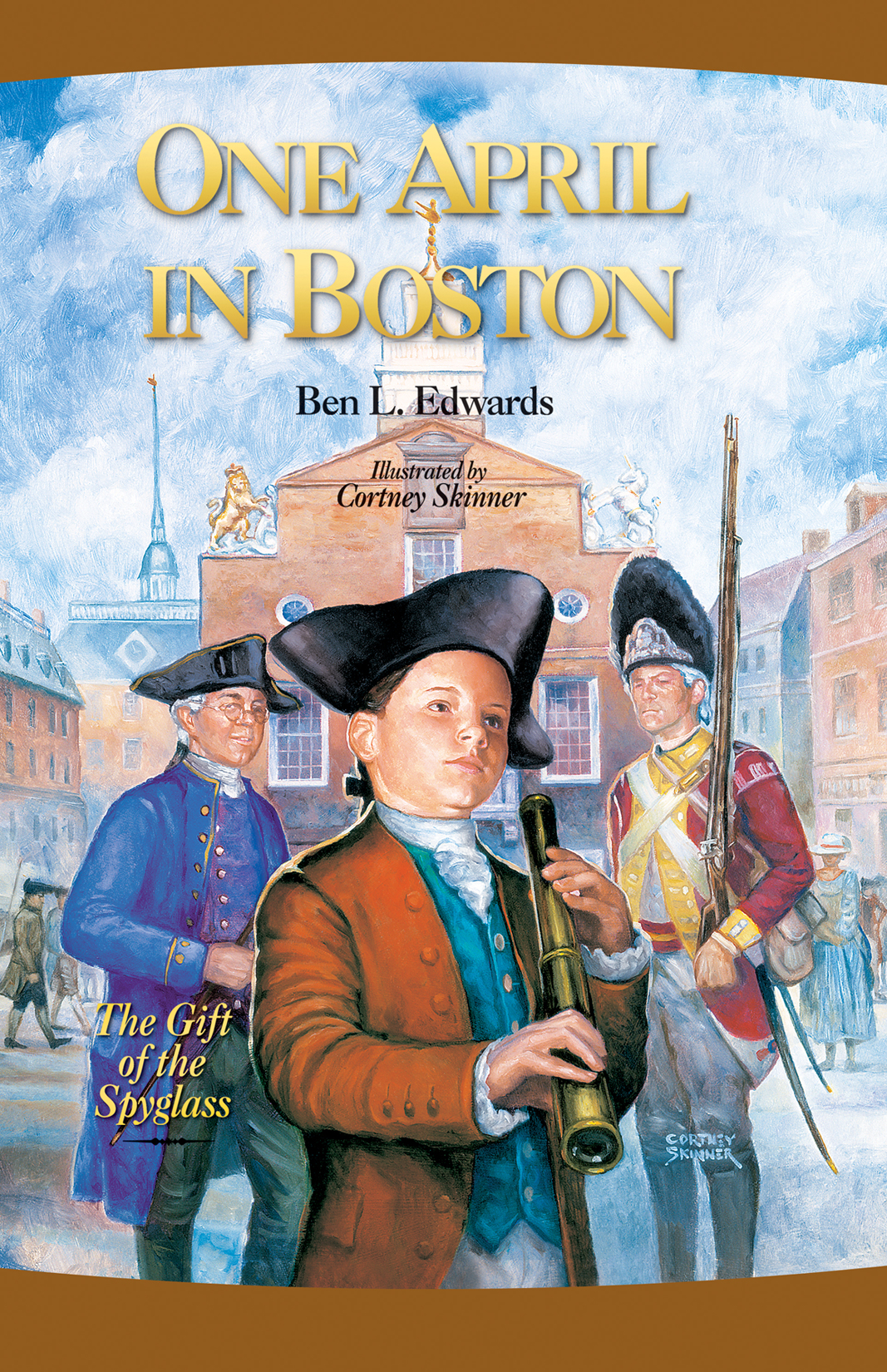One April in Boston
Seeing the Future—A Gift We All Possess
Setting goals can help turn our visions for the future into reality—but only if we have the courage to take action each day and never quit
by Ben Edwards and Cortney Skinner | 01.14.20
Can we see into the future? Each of us has a concern for what lies ahead. We work hard in the present to bring about a better future, and many of us long to know what might be coming in the times ahead. Is there a device or some method to actually help us see into those times yet to happen? At least in some way, a spyglass can enable us to look into the future since it can visually bring much closer those faraway places and things towards which we’re heading. Visualization / the power of imagination is the first step in any goal setting process. Beyond that, action and persistence are what create our destiny. But can we get a glimpse of what that destiny will be? That is the question posed in One April in Boston.
When Cortney illustrated One April in Boston, a spyglass played an important part in young Ben Edwards’ motivation to make plans and create goals for his own future. In the story, 10-year-old Ben, who lives in 18th-century Boston, can actually glimpse images of the future through his spyglass, and that particular instrument is passed on to future generations of his family who likewise can see a hint of the coming times through its lens. The illustration below at left shows Ben in April 1775 standing on a barrel glancing out across the harbor through his spyglass. The illustration at right shows 10-year-old Philip Edwards (Ben’s great-great-grandson) in 1905 getting a vision of his own future through his ancestor’s spyglass.
 The Revolutionary War era in which young Ben Edwards lived was one of great change. It has been dubbed the “Age of Enlightenment” because of the intellectual, philosophical, and scientific developments that dominated the world during the 17th to 19th century. Among these new ideas and advancements were great strides in optical inventions, and 18th-century America had eager customers for any new instruments that could enhance the understanding of the world in which they lived. This 18th-century English trade card, a sort of advertisement of the period, shows the many scientific instruments available to the American colonists via importation from England. At the upper left is a spyglass. Ordinarily, the word telescope is used for a celestial instrument, and a spyglass denotes a terrestrial device. Along with being an important tool used by mariners and landlubbers alike, a spyglass was an oft-used pictorial device in paintings of the period, as shown in the two portraits below: Charles Stoppelaer’s portrait of Admiral Sir Walter Stirling and a young girl painted by Pietro Antonio.
The Revolutionary War era in which young Ben Edwards lived was one of great change. It has been dubbed the “Age of Enlightenment” because of the intellectual, philosophical, and scientific developments that dominated the world during the 17th to 19th century. Among these new ideas and advancements were great strides in optical inventions, and 18th-century America had eager customers for any new instruments that could enhance the understanding of the world in which they lived. This 18th-century English trade card, a sort of advertisement of the period, shows the many scientific instruments available to the American colonists via importation from England. At the upper left is a spyglass. Ordinarily, the word telescope is used for a celestial instrument, and a spyglass denotes a terrestrial device. Along with being an important tool used by mariners and landlubbers alike, a spyglass was an oft-used pictorial device in paintings of the period, as shown in the two portraits below: Charles Stoppelaer’s portrait of Admiral Sir Walter Stirling and a young girl painted by Pietro Antonio.
 In this painting, “General George Washington at Trenton,” by John Trumbull, Washington is holding a spyglass in his right hand. The painting was created after the Revolutionary War in 1792, and Trumbull, having been an aide-de-camp to Washington, was very familiar with the general’s military equipage as well as artistic symbolism used in portraiture. He included the spyglass (see the detail in the inset) in order to symbolize Washington’s role as a leader who could foresee and guide the destiny of the country for which he fought so tenaciously. Trumbull painted the spyglass so accurately that it has been recognized as one made by John Dolland of London, a famous and important maker of spyglasses, telescopes, and other optical instruments. Washington owned a number of spyglasses during his lifetime. He certainly used one during his early life as a surveyor, during which time he roamed all around the mountains, hills, valleys, and rivers of Virginia. For a surveyor, a spyglass would be instrumental in seeing the lay of the land, allowing the user to choose the best direction of travel, avoiding perilous pathways, and discovering safer routes. Of course, for a military officer, a spyglass would be crucial to spot enemy troop formations, artillery positions, and fortifications.
In this painting, “General George Washington at Trenton,” by John Trumbull, Washington is holding a spyglass in his right hand. The painting was created after the Revolutionary War in 1792, and Trumbull, having been an aide-de-camp to Washington, was very familiar with the general’s military equipage as well as artistic symbolism used in portraiture. He included the spyglass (see the detail in the inset) in order to symbolize Washington’s role as a leader who could foresee and guide the destiny of the country for which he fought so tenaciously. Trumbull painted the spyglass so accurately that it has been recognized as one made by John Dolland of London, a famous and important maker of spyglasses, telescopes, and other optical instruments. Washington owned a number of spyglasses during his lifetime. He certainly used one during his early life as a surveyor, during which time he roamed all around the mountains, hills, valleys, and rivers of Virginia. For a surveyor, a spyglass would be instrumental in seeing the lay of the land, allowing the user to choose the best direction of travel, avoiding perilous pathways, and discovering safer routes. Of course, for a military officer, a spyglass would be crucial to spot enemy troop formations, artillery positions, and fortifications.
Young Ben Edwards’ spyglass was handed down to him from his namesake and grandfather, Boston Sea Captain, Benjamin Edwards. Although not known at the time One April in Boston was written, subsequent historical research tells us about the encounter Captain Edwards had with the infamous pirate, George Lowther, in the Caribbean on January 10, 1722. A spyglass was a life-saving tool to mariners and pirates alike, enabling them to pick out details of and hopefully identify distant ships that might prove dangerous or even deadly. Undoubtedly, Captain Edwards used his spyglass to spot and identify Lowther’s ship. Luckily, Captain Edwards survived the encounter and lived to tell the tale of his adventure and fight with the pirate. There was enough detail in a description of the attack, which first appeared in A General History of Pyrates by Captain Charles Johnson in 1724, so that Cortney was able to approximate what the scene may have looked like when the two ships traded cannon fire. In the painting below, which he produced in 2016, Lowther’s ship, the “Happy Delivery,” is at left, and Captain Edwards ship, the “Greyhound,” is at right.
Philip Edwards’ life in 1905 was far different from that of his great-great-grandfather Ben. Compared to the troubled times of 1775 Boston, there was relative calm in the country and especially in the Millville section of Naugatuck, Connecticut, where Phil lived with his family and friends. His father worked at the burgeoning Goodyear Metallic Rubber Shoe Company, which was the main employer for the area. Young Phil enjoyed fishing with his friends at Long Meadow Pond and, as a teenager, made even more friends as he’d deliver groceries for a local market, making his rounds in a horse-drawn wagon. In One April in Boston, Phil shared his encouraging thoughts about setting goals and never giving up on them with the local children as he gave them rides in his delivery wagon. In the story, Phil’s spyglass allowed him to perceive something of the future for both him and his friends, as seen in the illustration.
Every second we live creates a small step into our future. Whether it’s a figurative spyglass in the form of a basic goal or virtual spyglass that takes the shape of a plan that guides us into the future, we can each access our imagination and set goals to illuminate our path in life, much as young Ben and his great-great-grandson Phil did in One April in Boston. The key to the process, the story teaches us, is taking consistent action and never giving up. The book takes readers along on Ben’s and Phil’s journeys and inspires them to begin their own.
Image credits:
James Simons trade card, London Tradesmen’s Cards of the XVIII Century, 1925
Portrait of Admiral Sir Walter Stirling of Faskine, Charles Stoppelaer (active in London circa 1738-1755)
Girl Looking through a Telescope, Pietro Antonio Rotari (1707-1762) Nationalmuseum, Stockholm, Sweden
General George Washington at Trenton by John Trumbull, 1791, Yale University Art Gallery, New Haven, Connecticut
Buy the Book Here
Direct from the Author
Paul Revere House - Boston
About This Blog
The Spyglass Blog was created to mark the 20th anniversary of the children’s book One April in Boston. Here the author and illustrator share the stories behind the illustrations, give insight into the artistic process, and introduce related artwork Ben Edwards shares on his Walking Boston private tour. SpyglassBlog.com
Subscribe
Receive notice by email when a new post has been added to the Spyglass Blog.
Meet the Author
Boston’s only private guided walking tour with a children’s book author and relative of Paul Revere. Details below.
Family Tours
Three private tour options. A fun and educational tour of the Freedom Trail your children will love! BostonFamilyTour.com
Field Trips
Field trips for the 2019-2020 school year are Sold Out. Booking now for the fall of 2020. BostonFieldTrip.com
Homeschool Groups
A unique field trip for homeschoolers that teaches your children American history and inspires them to create goals. Homeschool-FieldTrip.com





